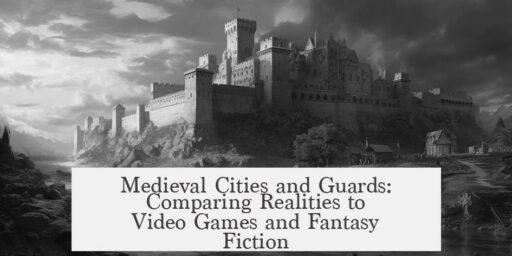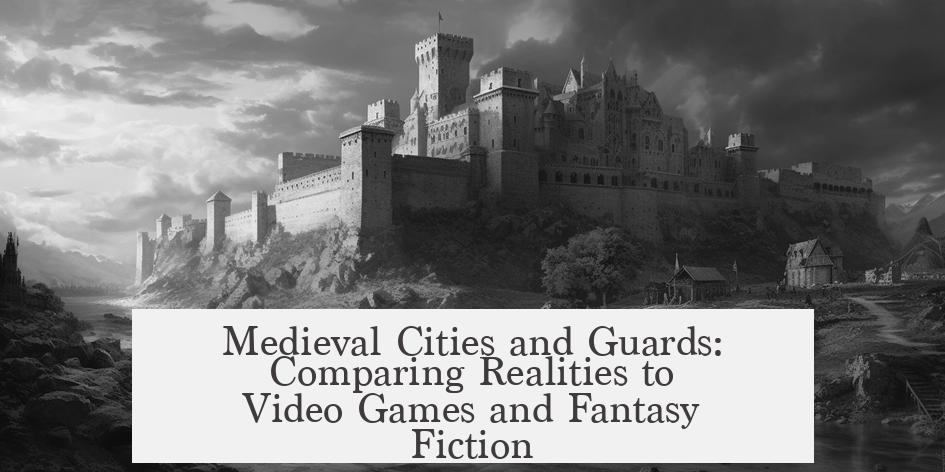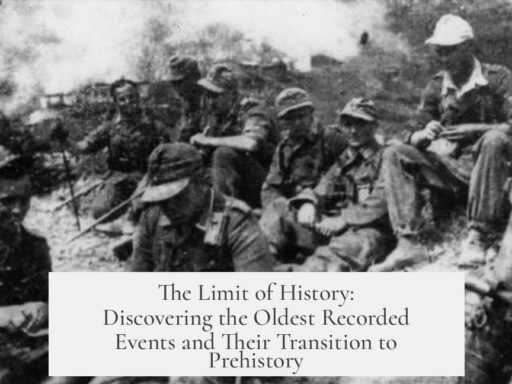Real medieval cities did not have guards like those in video games and fantasy fiction. Rather than a professional, paid police force wearing distinctive uniforms, medieval urban security largely depended on unpaid volunteers from local militias who wore everyday clothes and wielded simple weapons.
In many medieval cities, the concept of a dedicated guard force patrolling streets in shining armor is largely a myth shaped by modern media. Instead of professional guards, townspeople often took turns standing watch or performing patrol duties. These volunteers helped protect the city but were not regularly compensated. The local lord or city council rarely funded a full-time, salaried security force.
Equipment was minimal and affordable. Armor and swords were expensive, so most guards did not have specialized gear. They typically used whatever they could afford, such as clubs or farm tools. High-status military forces or city militias sometimes had better weapons and some rudimentary uniforms, especially in the later Middle Ages, but such instances were exceptions. For most city “guards,” functional street clothes and basic weapons were the norm.
Medieval cities enforced justice with limited jurisdiction. Guards’ authority extended only within their city walls. If a criminal escaped one town, they might start anew in another city, assuming they gained entry. Leaving a city often required travel papers, and unauthorized movement could result in being turned away or detained at city gates. This setting contrasts strongly with the omnipresent, all-knowing guards depicted in fantasy fiction.
Nighttime conditions in medieval cities also shaped guard activity. Without artificial lighting, streets were very dark, making patrols more challenging. Illumination was limited to bonfires, torches, or lanterns, which provided localized light only. This lack of lighting led townspeople to avoid traveling after dark and may have resulted in informal curfews or restricted movement in dangerous areas. Guards, if present, focused patrols on critical points like city gates rather than thorough city-wide surveillance.
Urban living conditions influenced the role and presence of guards too. Medieval towns often suffered from sanitation problems and unpleasant odors. The local lord or ruler frequently preferred residing in a nearby rural castle rather than within the busy, dirty city center. This absence meant that guards were under fewer direct orders from the lord and more subject to local community organization.
For comparison, Chinese medieval cities developed a more formalized guard system. Civil guards in large Chinese cities worked under a prefect reporting to higher officials. These guards serviced the local yamen, a compounded office serving as both court and city hall. Unlike European city watchers, Chinese civil guards received salaries, housing, and equipment. They performed routine patrol and peacekeeping duties.
Additionally, specialized units like the bukuai were tasked with pursuing serious criminals and bandits. These specialized guards underwent strict training and periodic testing to qualify for their roles. Their systematic organization and compensation represent a more professional security service than most European medieval cities enjoyed.
| Aspect | European Medieval Cities | Chinese Medieval Cities (Qing Dynasty) |
|---|---|---|
| Guard Status | Unpaid volunteers, local militia | Paid civil guards, salaried with housing |
| Equipment and Uniforms | Street clothes, basic weapons like clubs | Supplied by court, specialized weapons for units |
| Jurisdiction | Limited to city walls | Comprehensive within city and legal system |
| Training and Organization | Minimal, militia-based | Formal training and qualification tests |
Medieval cities lacked the kind of uniformed, well-armed police that fantasy fiction standardizes. Security depended heavily on local citizens volunteering for watch duties. Their equipment was simple and limited by affordability. Guards could not control movement beyond city borders, and they faced serious challenges such as darkness and poor urban conditions.
Despite these limitations, medieval city guards played a vital role in maintaining public order. They provided basic defense and law enforcement within their communities. Their efforts differed significantly from the modern or fantasy depictions, which blend contemporary police concepts with medieval imagery.
- Medieval city guards were mostly unpaid volunteers, unlike salaried guards in fantasy or modern settings.
- Equipment was minimal; guards commonly wore ordinary clothes and used simple weapons.
- Jurisdiction was limited to the city, with travel between cities controlled by permits and gatekeepers.
- Nighttime darkness affected patrols; cities were poorly lit, leading to restricted movement after dark.
- In comparison, Chinese medieval cities maintained formal, salaried civil guards with structured training and equipment.
Did Real Medieval Cities Have Guards Like in Video Games and Fantasy Fiction?
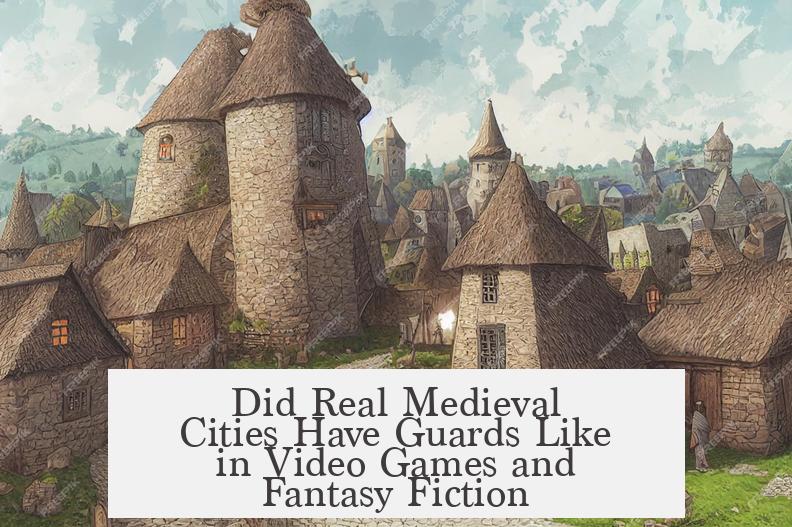
Yes, real medieval cities did have guards, but they were quite different from the shiny, ever-vigilant NPCs you meet in video games or fantasy stories. They didn’t wear flashy uniforms, they weren’t always paid professionals, and their systems of justice weren’t as straightforward as just paying a fine or heading to jail. Let’s unravel the medieval grit behind our pixelated guards.
When you think of guards in games like Skyrim or fantasy novels, you picture soldiers dressed in gleaming armor, systematically walking their beats, ready to slap cuffs on any miscreant who throws a stick or a coin. That’s a neat, tidy image to play with. Reality? Not so much.
Unpaid Volunteers vs. Professional Guards
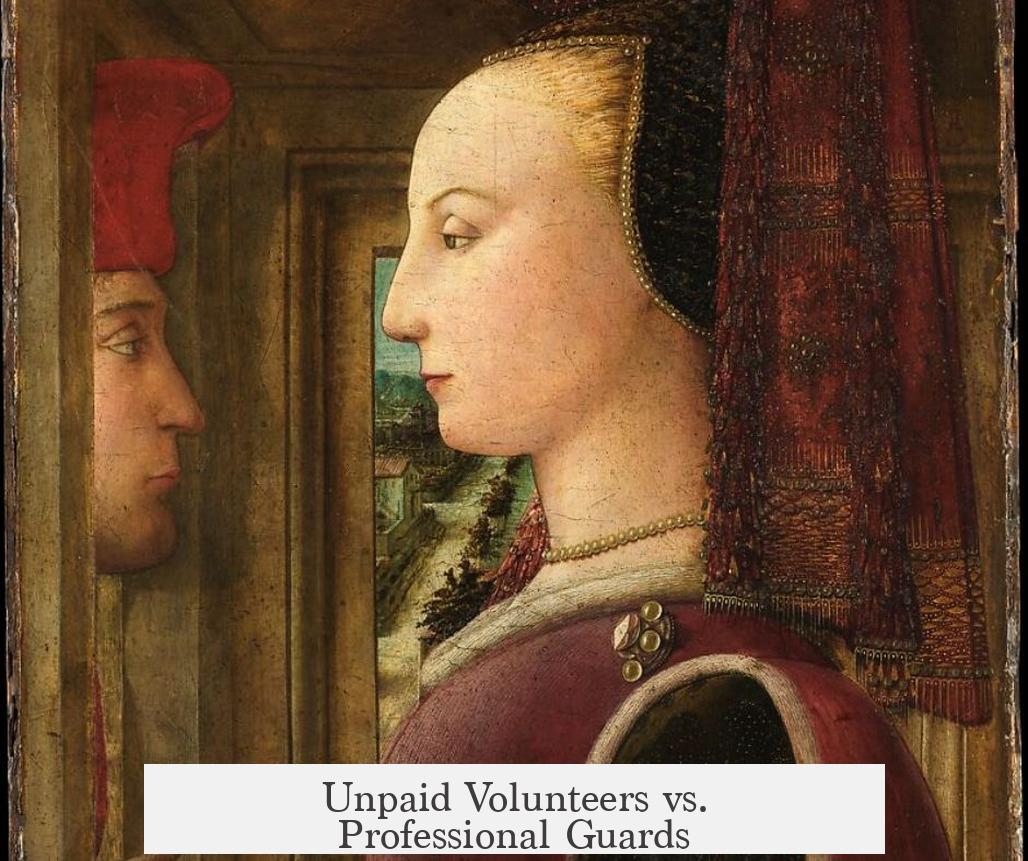
First up: the folks who stood watch in medieval cities were mostly unpaid volunteers. Unlike the game guards who clearly receive a salary or some sort of gold coin income from their local lord or council, medieval guards were often regular townsfolk moonlighting as defenders. They formed part of the local militia, meaning you could be a baker by day and a watchman by night.
This arrangement had a pretty significant impact on the quality and consistency of the guard’s presence. No one’s showing up for duty in a shiny uniform because uniforms were rare and expensive. Most guards wore their regular street clothes and carried cheap, improvised weapons—think wooden clubs rather than swords.
The Medieval Justice System Was Anything but Simple
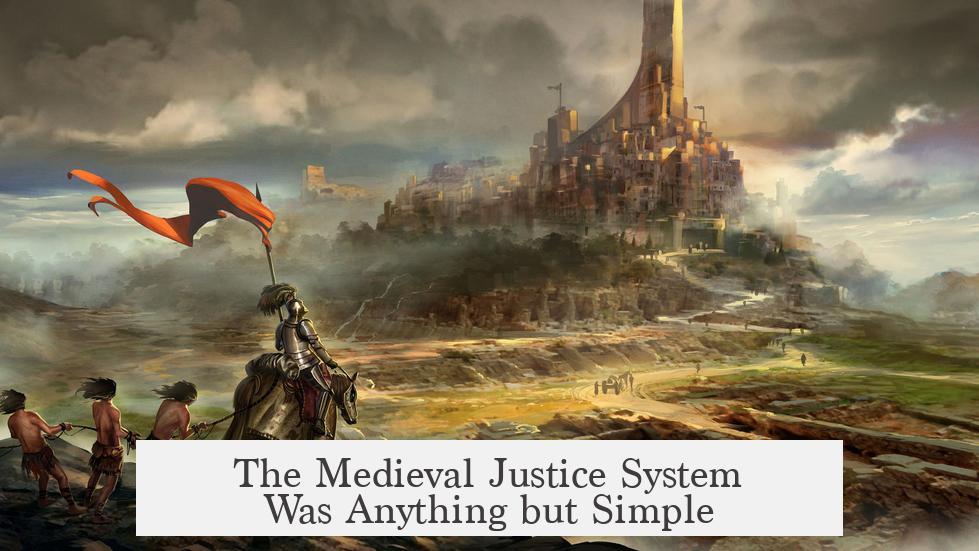
Video game guards often deal with offenders in a simplified way: pay the fine, serve jail time, or face execution. But real medieval justice came in shades of grey. First off, prisons were mostly for political prisoners—sharp practice for nobles you couldn’t just kill outright.
Regular folk caught _red-handed_ were more likely to face beating, public humiliation, or exile. Ever heard of the _wergild_? It’s a fine paid to the family of a victim if you maimed or killed someone, but it wasn’t cheap. Most commoners couldn’t afford it in one lump, so they might spend years working off that debt—if they were lucky to dodge harsher punishments like execution.
The trials themselves could get quite theatrical. Trials by fire, combat, ordeal, or even jury might decide a person’s fate. People believed divine intervention would reveal the truth, a spiritual version of “tech support,” if you will.
Did Guards Wear Cool Armor and Uniforms?
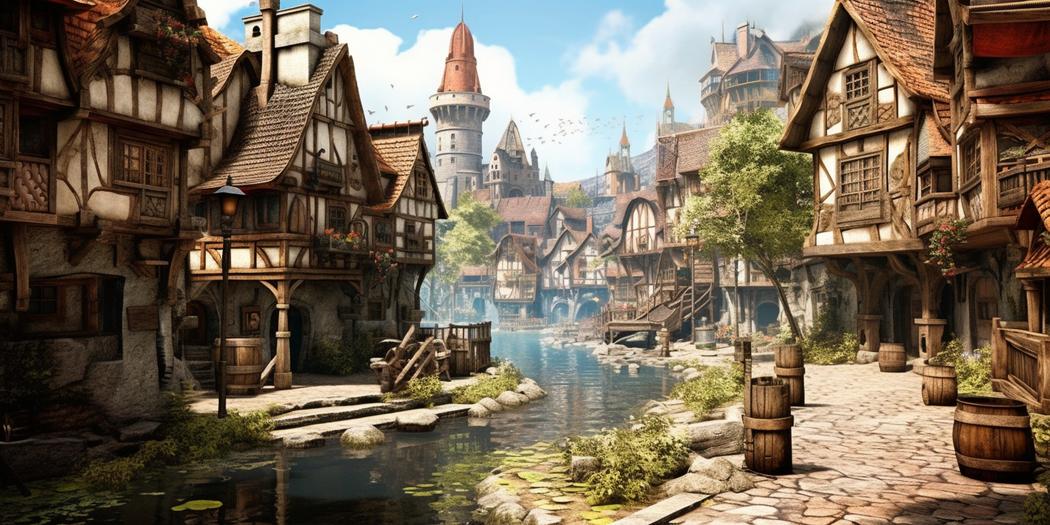
Forget the fancy, matching armor you see in games. For most medieval guards, gear was scarce and expensive. If you weren’t a noble or part of an elite fighting force, you likely didn’t own a sword or helmet. Clubs and pitchforks were more common tools of the trade.
Uniforms as a concept only emerged in later medieval periods and were often limited to guards directly employed by the lord or emerging city governments. So while the lord’s personal guards might sport matching colors and coats of arms, the ordinary patrols did not.
The Scope of Medieval Guards’ Authority: Spotty and Local
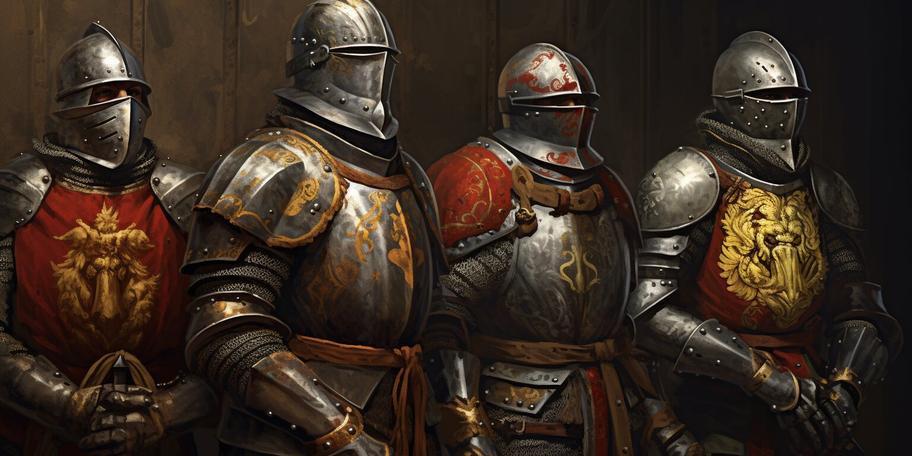
Video game guards magically know everything about you, where you’ve been, and what crimes you’ve committed. Real medieval guards? Not so. Their jurisdiction was local and limited to their city or sometimes just part of it. Cross the city gates, and you essentially “reset” your law-abiding status.
Travel was tightly regulated, too. Without proper traveling papers (yes, passports before passports!), you could be refused entry to neighboring cities or even stopped from leaving your own. These rules kept the riff-raff in check—or so the cities hoped.
Medieval Urban Life: Not Exactly Charming
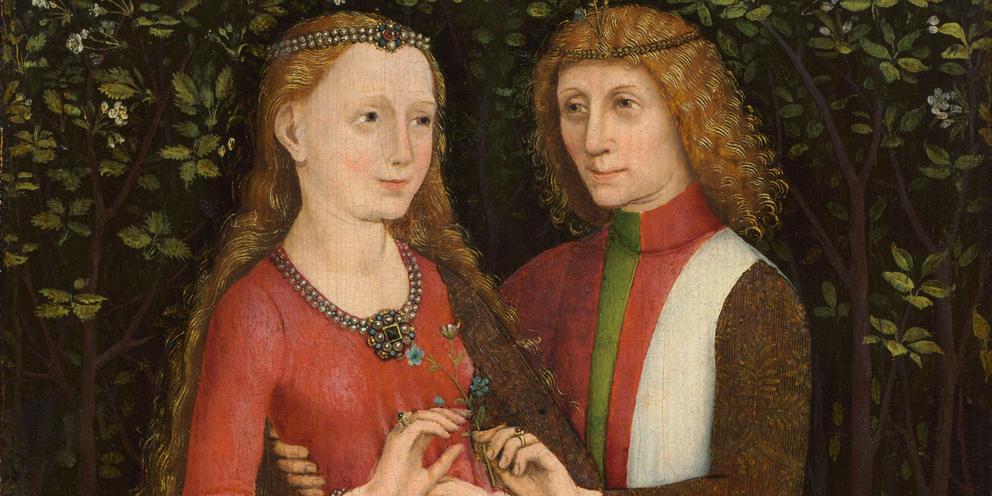
Medieval cities were noisy, smelly, and crowded. They stank to high heaven because of poor sanitation. This isn’t the romantic cobblestone street you stroll in games; it was grime central, day and night. Because of these conditions, local lords often preferred their country castles over the urban thickets. The city wasn’t exactly the most pleasant place to hold court or relax.
Nighttime in Medieval Cities: Dark and Dangerous
Medieval cities were much darker after sundown. Lack of street lighting meant shadows were thick enough to swallow you whole. This darkness meant guards had their work cut out—and often, there was a curfew. People avoided certain areas with bad reputations, turning the night into a risky game of hide and seek.
How Did Other Cultures Handle City Guards? The Example of Medieval China
Comparing to medieval China gives a fascinating twist. Big cities there had civil guards linked to the local yamen (court and city hall). These guards were salaried, had room and board, and were equipped by the court. The burly bookai — an elite unit—chased bandits and serious criminals with intense training. They even had to pass tests every three years to keep their jobs. Such structure contrasts sharply with the more volunteer-styled Western city watches.
Wrapping Up: Real Medieval Guards Were a Mixed Bag
So, do real medieval cities have guards like the ones in video games or fantasy? Not exactly. They were a patchwork of unpaid volunteers, poor equipment, and a justice system layered with public shaming, brutal punishments, and evolving laws.
But that doesn’t mean they weren’t essential. These guards helped keep some order in cities that were otherwise chaotic. They stood watch under grim conditions, without shiny uniforms or stat bars flashing above their heads.
Next time you see a fantasy city guard standing at a gate, remember: their real-life medieval cousins probably wore street clothes, carried clubs, and hoped the next passerby wasn’t trouble. That’s the authentic medieval reality hiding behind the fantasy veneer.
So, fancy trading your dragon-slaying sword for a club and a dark alley watch duty? Medieval guards volunteered for the daunting job, for better or worse.
